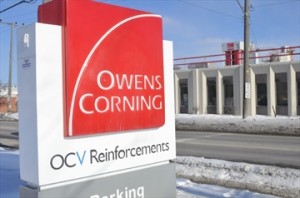Courtesy Guelph Mercury | January 26, 2016
By James Campbell-Prager
Every year, London’s Budweiser Gardens opens its doors over 200 times to host everything from OHL hockey to the Royal Marine Band to tapings of auditions for “So You Think Can Dance.” Within the next few months Kingston’s K-Rock Centre will host the Frontenacs, a Star Trek tribute concert, and the band Death Cab for Cutie. Municipalities all over Southern Ontario enjoy the pleasures of these multi-purpose performance spaces, and the benefits are clear: not only does the city-as-landlord reap the financial rewards of ticket sales, but the city-as-society gains a communal centre, an indoor, well-furbished, well-equipped space in which citizens can come together not merely for sport, but for music, art, and spectacle – for, in other words, culture.
Every year Guelph’s Sleeman Centre opens its doors about 35 times for OHL games. The other 300-odd days are largely taken-up by private events such as hockey, skating, and sometimes hockey – give or take a Hillside Inside. I’m speaking hyperbolically, but the contrast between Budweiser and Sleeman could not be starker. The city operates the Sleeman Centre as though it were a village arena, an appalling waste of a facility that seats almost five thousand people. It was poor ticket-sales that forced the Centre’s original owners to pass it along to the city in 2005, yet the city has done nothing to diversify Sleeman’s event calendar in the decade since. Its revenue still comes from ice sports, and almost exclusively ice sports.
What would it take to change this? Guelph may not be as big or wealthy as, say, London, but if we cannot ape London’s size there’s no reason we cannot emulate its style. The big infrastructure is already in place – the Centre has four walls, a ceiling, and plenty of seats – what is lacking is the smaller infrastructure. The Centre needs plug-and-play architecture for visiting talent: a decent lighting rig, a proper sound-system, a technical set-up to stop an incoming performer from having to haul a small theatre with them just to play a gig. Acquiring this will require two things: money and political will.
Marty Williams, executive director of the Downtown Guelph Business Association, does not think that money would be too great a hurdle. An investment of $250,000, he says, could bring in “potentially millions of dollars in revenue.” Williams believes that the Budweiser Gardens is good example of a similar investment that made-good, for London is using the draw of the Gardens to fuel business in its downtown core.
It’s a view that Ward 1 Coun. Dan Gibson shares. “Look to Oshawa,” he says, where the General Motors Centre is creating a boom in hotels and shopping centres. Thousands come to the GMC for a show, but stay for the amenities Oshawa has to offer. While the redevelopment of Baker Street may currently hold the attention of council, Gibson believes that for a “fraction of the investment” council could spend on Baker Street, Guelph could make the Sleeman Centre “the iconic, downtown destination of our City.”
It’s reasonable point, and with an economic engine like that enriching the City of Guelph’s coffers, more expensive and extensive redevelopment (such as Baker Street or St. George’s Square) might become more fiscally palatable, not to mention sustainable. After all, there’s little point to rebuilding the downtown if nothing is going to draw people there.
The City of Guelph is very cagey as to whether or not the Sleeman Centre is solvent. I suspect that in good hockey years the Centre breaks-even while in bad years it hemorrhages money. A city asset does not have to be profitable, but it should have more stable finances than the capricious whims of the sporting gods.
I beg council to set aside dreams of a Baker Street Eden and focus on something achievable now: for a few hundred grand and a couple months work, Guelph too could be visited by Death Cab for Cutie. At the very least, this town deserves better than an over-sized arena that drains city coffers every time the Storm’s shots go wide of the net.

